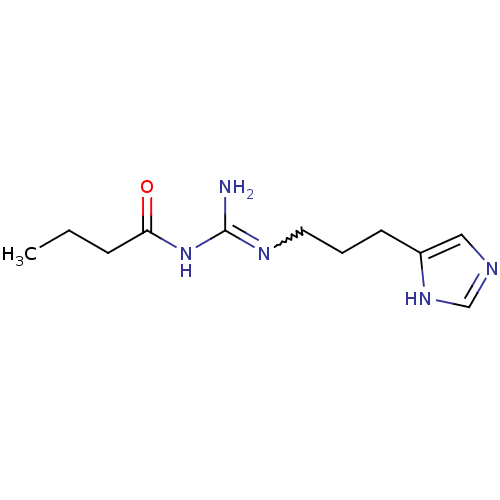Affinity DataEC50: 1.60nMAssay Description:Agonist activity at human H3 receptor expressed in insect Sf9 cells co-expressing Gialpha2, Gbeta1gamma2 and RGS4 assessed as gamma[32P]GTP binding b...More data for this Ligand-Target Pair
Affinity DataEC50: 2.60nMAssay Description:Agonist activity at human H4 receptor expressed in insect Sf9 cells co-expressing RGS19 fusion protein and Gialpha2, Gbeta1gamma2 assessed as gamma[3...More data for this Ligand-Target Pair
Affinity DataEC50: 141nMAssay Description:Agonist activity at human H2 receptor expressed in insect Sf9 cells co-expressing GsalphaS fusion protein assessed as gamma[32P]GTP binding by liquid...More data for this Ligand-Target Pair
TargetHistamine H2 receptor(Cavia porcellus (domestic guinea pig))
University Of Regensburg
Curated by ChEMBL
University Of Regensburg
Curated by ChEMBL
Affinity DataEC50: 186nMAssay Description:Agonist activity at histamine H2 receptor in guinea pig atrium assessed as increase in heart rateMore data for this Ligand-Target Pair
Affinity DataEC50: 2.19E+3nMAssay Description:Agonist activity at human H1 receptor expressed in insect Sf9 cells co-expressing RGS4 assessed as gamma[32P]GTP binding by liquid scintillation coun...More data for this Ligand-Target Pair

